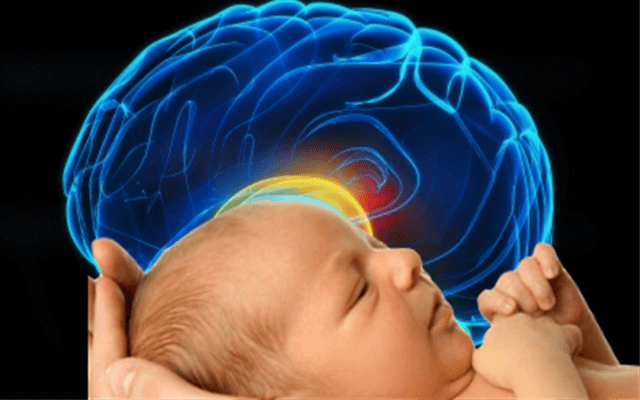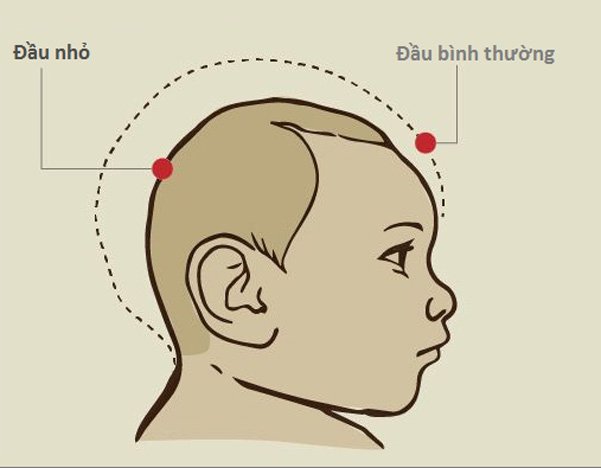Asphyxia at birth: Dangerous complications
According to the World Health Organization, asphyxia at birth or birth asphyxia occurs in 2 to 10 out of every 1000 newborns born at term, and much more so for premature births. WHO estimates that 4 million neonatal deaths occur each year from asphyxia at birth, accounting for 38% of deaths in children under 5 years of age.
In term infants, asphyxia may occur pre- or during labor due to impaired placental blood gas exchange. Asphyxia can also occur secondary to birth due to respiratory, cardiovascular, or neurological abnormalities. As a result, the child may develop hypoxic encephalopathy, which may be accompanied by damage to other organs.
1. What is infant asphyxia?
Birth asphyxia or neonatal asphyxia is a medical condition for a newborn infant caused by a lack of oxygen that persists long enough during delivery to cause physical harm, often damage to the brain. Injury can happen to almost any newborn's organs (heart, lungs, liver, intestines, kidneys), but brain damage is the biggest concern and probably the least likely to heal. quickly or completely. In more pronounced cases the infant is likely to survive, but with brain damage either in the form of mental damage, such as developmental delay or intellectual disability, or in the form of physical damage other.
Newborn asphyxiation is detected as soon as the newborn does not cry within the first minute.

Ngạt sơ sinh là bệnh lý đối với trẻ sơ sinh do thiếu oxy kéo dài
Factors that cause fetal distress are also factors that cause asphyxia, so standing in front of pregnant women at high risk such as pregnancy toxicity, placenta previa, mother with medical disease, narrow pelvis, uterine contraction disorder , twin pregnancy, multiple pregnancy, polyhydramnios, oligohydramnios, malformations, by ultrasound all predict neonatal asphyxia and prepare equipment for resuscitation of the newborn. According to a number of studies that have led to new international guidelines for neonatal resuscitation in recent years, it is recommended that the use of normal air during birth asphyxia has a resuscitation effect and a better prognosis instead. for 100% oxygen.
2. Risk factors for asphyxia at birth
The mother is too young or too old If the mother has cardiopulmonary disease, asthma, severe anemia, antepartum bleeding, low blood pressure, high blood pressure, abnormal uterine contractions Dirty amniotic fluid Multiple pregnancy No postpartum care Neonatal low birth weight Intensification of labor with oxytocin Hemorrhage Eclampsia and preeclampsia Anemia during pregnancy and delivery
3. Complications of respiratory failure/suffocation in infants
Asphyxia at birth can manifest in varying degrees and consequences with subsequent sequelae. If severe, signs of cyanosis, respiratory failure increase, heart rate slows down, blood pressure drops, body temperature drops, the child may die. If mild and with timely intervention and proper treatment, the symptoms gradually subside and the child's life can be saved. However, after prompt emergency treatment, it can still leave sequelae such as cerebral hypoxia, cerebral hemorrhage, hypoglycemia...
It is possible to monitor and evaluate neurological symptoms after the first week. gradually identify sequelae in the first year such as: paralysis of 2 lower limbs, paralysis of 1/2 of body, spastic quadriplegia, epilepsy, severe mental retardation, sensory disturbances.
Within the first month after birth in the case of a baby asphyxiated at birth, if the baby's head circumference does not grow in diameter, it indicates that the baby has a complication of microcephaly.

Ngạt ở trẻ sơ sinh có thể gây biến chứng đầu nhỏ trong tháng đầu tiên sau sinh
Newborns with severe or mild asphyxia often have long-term symptoms of illness, bronchitis, persistent pneumonia, weak resistance, and weak body.
Some cases can lead to multi-organ damage from birth (especially liver and kidney damage), seriously affecting the health of children later.
At Vinmec International General Hospital, there is an ultrasound machine in the delivery room that can measure the position of the baby's head in the mother's pelvis to help predict a difficult or easy birth for the doctor to choose the appropriate birth method. , safe for mother and child. Each delivery room has the most modern neonatal care car, full of equipment from warm lights, baby scales, baby's health assessment system (measures heart rate, breathing rate, blood pressure, blood oxygen). )... helps in timely diagnosis and treatment of health problems of children at birth.
Để đặt lịch khám tại viện, Quý khách vui lòng bấm số HOTLINE hoặc đặt lịch trực tiếp TẠI ĐÂY. Tải và đặt lịch khám tự động trên ứng dụng MyVinmec để quản lý, theo dõi lịch và đặt hẹn mọi lúc mọi nơi ngay trên ứng dụng.





